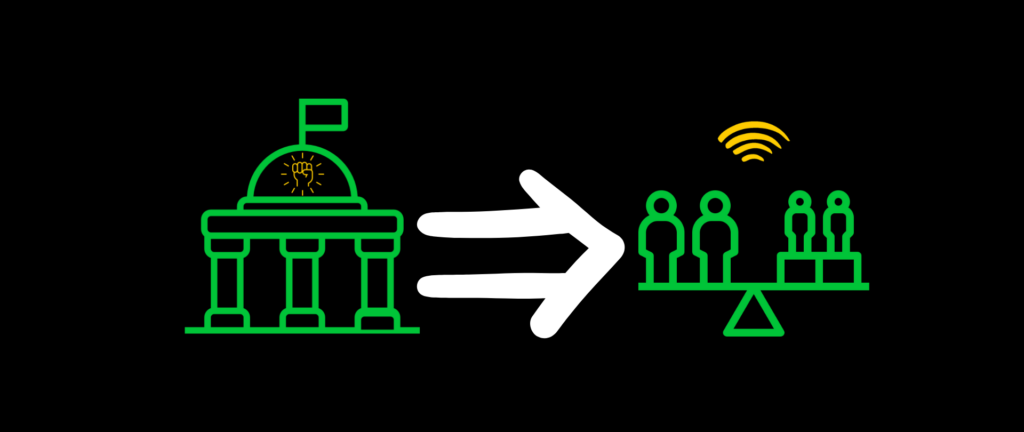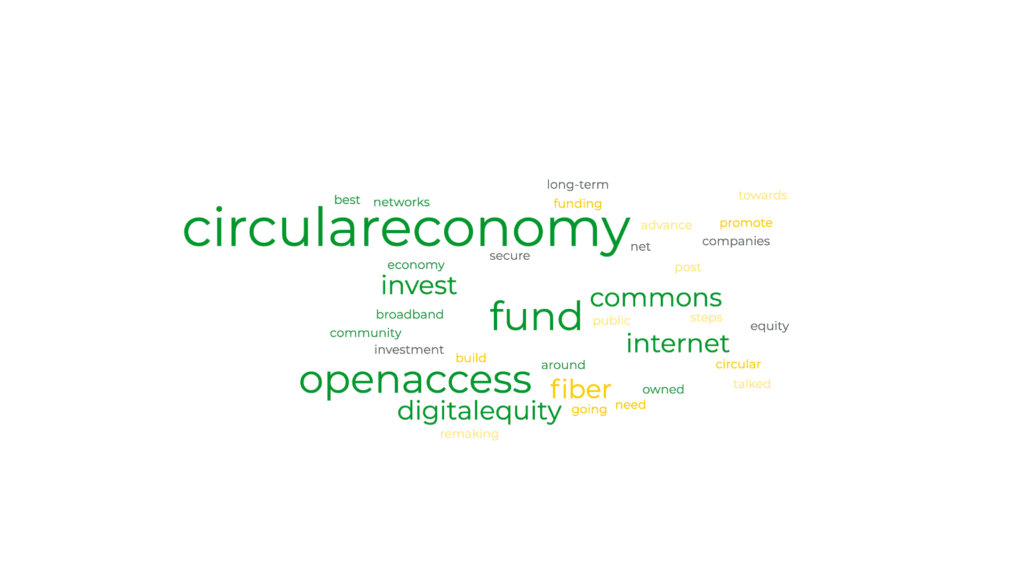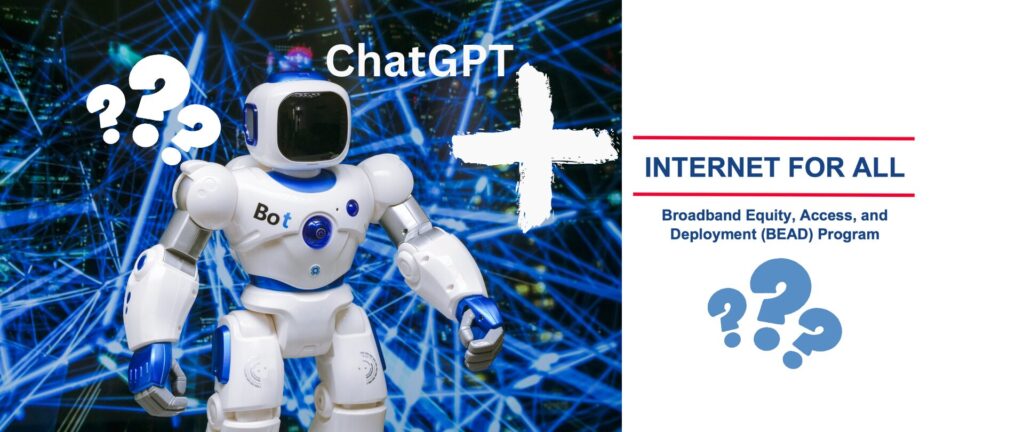What are the benefits of an open access Internet network?

An open access Internet network refers to a network where the infrastructure is publicly available and can be used by multiple service providers to offer their services to end-users. There are several benefits to having an open access Internet network, including:
- Increased competition: When multiple service providers have access to the same network infrastructure, it creates a more competitive market. This can lead to lower prices for consumers and better services as providers strive to differentiate themselves from their competitors.
- Greater innovation: With more service providers on a network, there is greater potential for innovation in terms of new services, applications, and business models. This can lead to a more dynamic and diverse Internet ecosystem.
- Improved access: An open access network can help to bridge the digital divide by providing more options for service providers to reach underserved communities. This can help to increase broadband adoption and promote digital inclusion.
- Better network utilization: An open access network can help to optimize network utilization by allowing multiple service providers to share the same infrastructure. This can lead to more efficient use of resources and better network performance.
- Enhanced transparency: An open access network can help to promote transparency in terms of network management and pricing. This can help to build trust between service providers, end-users, and regulators, and promote a more open and equitable Internet ecosystem.
What is the availability of open access Internet in the US?
Open access Internet networks are still relatively uncommon in the United States, and their availability can vary depending on the region and local regulations. However, here are some examples of locations where open access Internet is available:
- Ammon, Idaho: The city of Ammon has deployed an open access fiber network that allows residents to choose from multiple service providers.
- Westminster, Maryland: The city of Westminster has implemented an open access network that allows for competition between service providers.
- Seattle, Washington: The city of Seattle has an open access network that allows service providers to offer their services to residents.
- Lafayette, Louisiana: The city of Lafayette has a publicly owned fiber network that allows for open access by multiple service providers.
- Urbana-Champaign, Illinois: The University of Illinois has built an open access fiber network that is available to the surrounding community.
It’s worth noting that these are just a few examples and that the availability of open access Internet networks can vary greatly depending on the region and local regulations.
What is the argument?
The quote below is from a book we are using in our course for prospective teachers and group leaders. Real progress requires fundamental systemic change. I was fortunate in getting to know, Susan Crawford, when she was a law professor at the University of Michigan in 2007, and I was an elected member of Ann Arbor City Council, on the Cable Commission.
The second key step, one only a leader backed by federal agencies and Congress can take, is to declare (enforceably) that the standard connection for a thriving life in America requires a reasonably priced, open fiber network running to homes and businesses. Such a declaration could itself drive the upgrade: ancient last-mile copper networks could be forced into retirement through tax policy and other incentives; poles and conduit could be subjected to basic openness requirements as a matter of regulation and local ordinance; new housing could be approved for habitability and federal support only with fiber-readiness or actual fiber attached. By saying that anything that wasn’t fiber-ready, or actually connected to open fiber, wouldn’t be supported by federal funding, the federal government could push the entire process forward. There are limits to this power: state tax rules and state constraints on local authority can get in the way, and the details are difficult. But the federal government can do a great deal in the vast portion of the marketplace that is touched, directly or indirectly, by federal funding. The goal should be construction of open-access, dark, last-mile fiber available for lease and overseen by a public authority in every part of the country to all (or almost all) homes and businesses. It has to be open access to permit retail competition wherever possible. It has to be overseen by public authorities so that it will serve the public interests in low prices and high-quality services to everyone. The risk of allowing a private, unconstrained actor to control local dark fiber is that, quite rationally, that player will want to make as much profit for itself as possible from the facility, regardless of the public interest. Any sensible private actor controlling dark fiber would want to charge whatever the market could bear for access and limit its competition as much as possible, even though high prices would shut some people out of the system. That same actor would inevitably want to vertically integrate upstream into the provision of services, and then privilege its own retail activities over those of others, or at least make common cause with a few retail companies so that, together, they could squeeze consumers. And a private controller of this facility would always be looking for an exit, a private equity group of some kind to buy out its investment and consolidate networks across the country. But just as we wouldn’t want private actors to control highways because we want cars and freight to travel freely without being forced to pay excessive prices, so too should we ensure that our basic communications networks, now upgraded to fiber optic last miles, are held and operated in the public interest.
Fiber by Susan Crawford
Who is helping people to find open access?
Some businesses actually see open access as an opportunity.
Documentary on open access from UTOPIA fiber
Lit Communities
Underline is providing open access in Colorado
The Underline model is fully-funded and does not require any capital or investment from the community. It’s what’s called a “non-procurement” model—no need to issue government bonds, divert funds from other areas of the budget, increase taxes, or rely on subscriber installation fees. To fund our networks, we work with institutional investors looking for long-term, stable returns, and with an interest in the underlying social purpose of bringing intelligent infrastructure to U.S. communities.
Finance Solutions from Underline









(Michigan) MOON-Light will enable more than 100 distributed exchange connectors in an open access model. See Merit.edu
“Although an open access model is considered the “gold standard” by some network operators, including Utah-based UTOPIA Fiber, some commentors are concerned that the model will reduce ISPs to price-war strategies to eliminate competition and retain market share.
According to Gomez, limiting providers is a sustainable solution to price gauging concerns.
Chief Marketing Officer at UTOPIA Fiber Kim McKinley told Broadband Breakfast that its network, however, does not have price gouging concerns, stating that the company views both provider and end user as its customers and does what it can to protect each. ”
https://broadbandbreakfast.com/2023/07/open-access-models-should-limit-number-of-providers-riding-the-network-isp-exec/
“The Community Broadband Act will bridge the digital divide and help local governments enable connectivity, increase economic growth, and create jobs by building local broadband systems. I’m eager to see this legislation move forward to better connect our nation.”
WASHINGTON, D.C. – U.S. Rep. Anna G. Eshoo (D-CA) and Sen. Cory Booker (D-NJ)
https://eshoo.house.gov/media/press-releases/rep-eshoo-sen-booker-introduce-bill-expand-internet-access-and-protect-local
A significant step in promoting open access networks to maximize BEAD money efficiency was described in the Broadband Breakfast video linked here:
Panelists:
Bill Hogg, CEO of Gigapower
Erin Scarborough, President, Broadband and Connectivity Initiatives at AT&T
Adam Waltz, Managing Director at BlackRock Infrastructure
Roger Entner, Founder and Lead Analyst of Recon Analytics
Drew Clark (moderator), Editor and Publisher, Broadband Breakfast
https://www.youtube.com/live/pfqFUEy_enU?si=BHUtuMYmjV2wLGhI
The following is from Jake Neenan at Broadband Breakfast:
WASHINGTON, September 13, 2023 – Gigapower is in talks with state broadband offices about potentially building out open access infrastructure with grants from the Broadband Equity, Access and Deployment Program, the company’s CEO said Wednesday.
“I think that when the time comes for BEAD, this platform will be a perfect fit,” Bill Hogg, the company’s CEO, said at a Broadband Breakfast Live Online event.
That’s because consumers could still choose from multiple internet providers offering different services at different price points, all on BEAD-funded Gigapower infrastructure, Hogg pitched. The traditional ISP-owned infrastructure model would only bring service from the provider that won a state contract to expand their network, he claimed.
“They like the idea that multiple ISPs will be able to bring choice to their constituents,” he said of state broadband officials. “They don’t have to pick a winner or a loser.”
Gigapower, a joint venture between AT&T and the investment firm BlackRock, is already slated to build a 1.5-million-location open access network. That means it will own and operate a fiber network while allowing multiple internet service providers to use that network to connect individual homes and businesses.